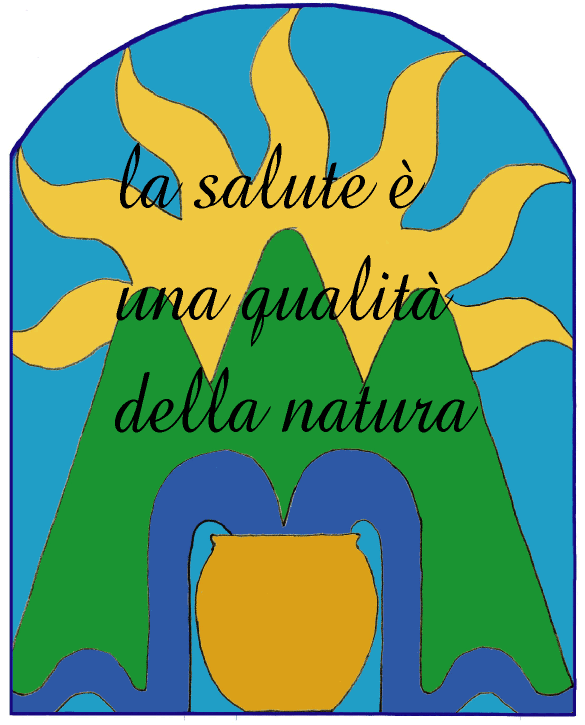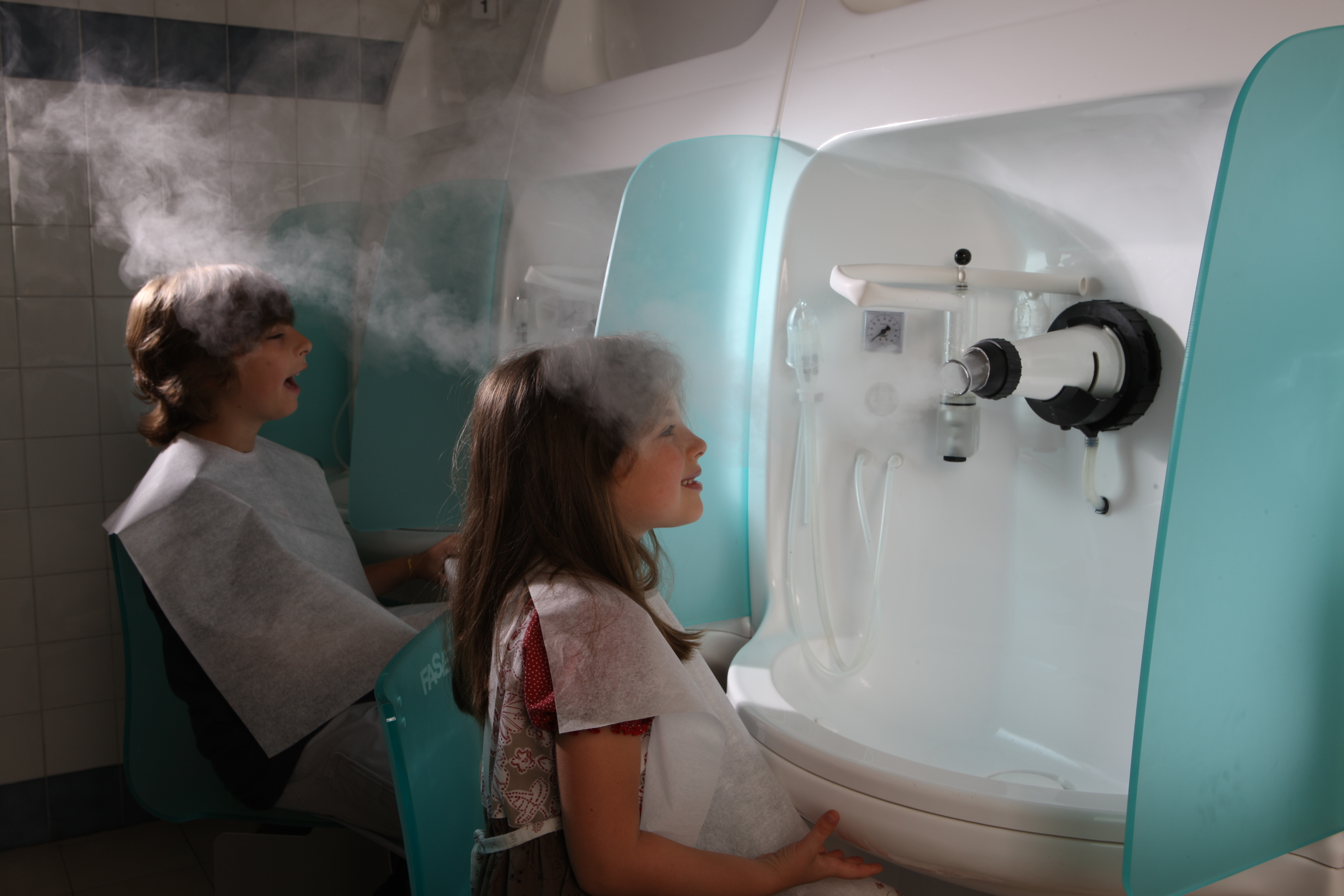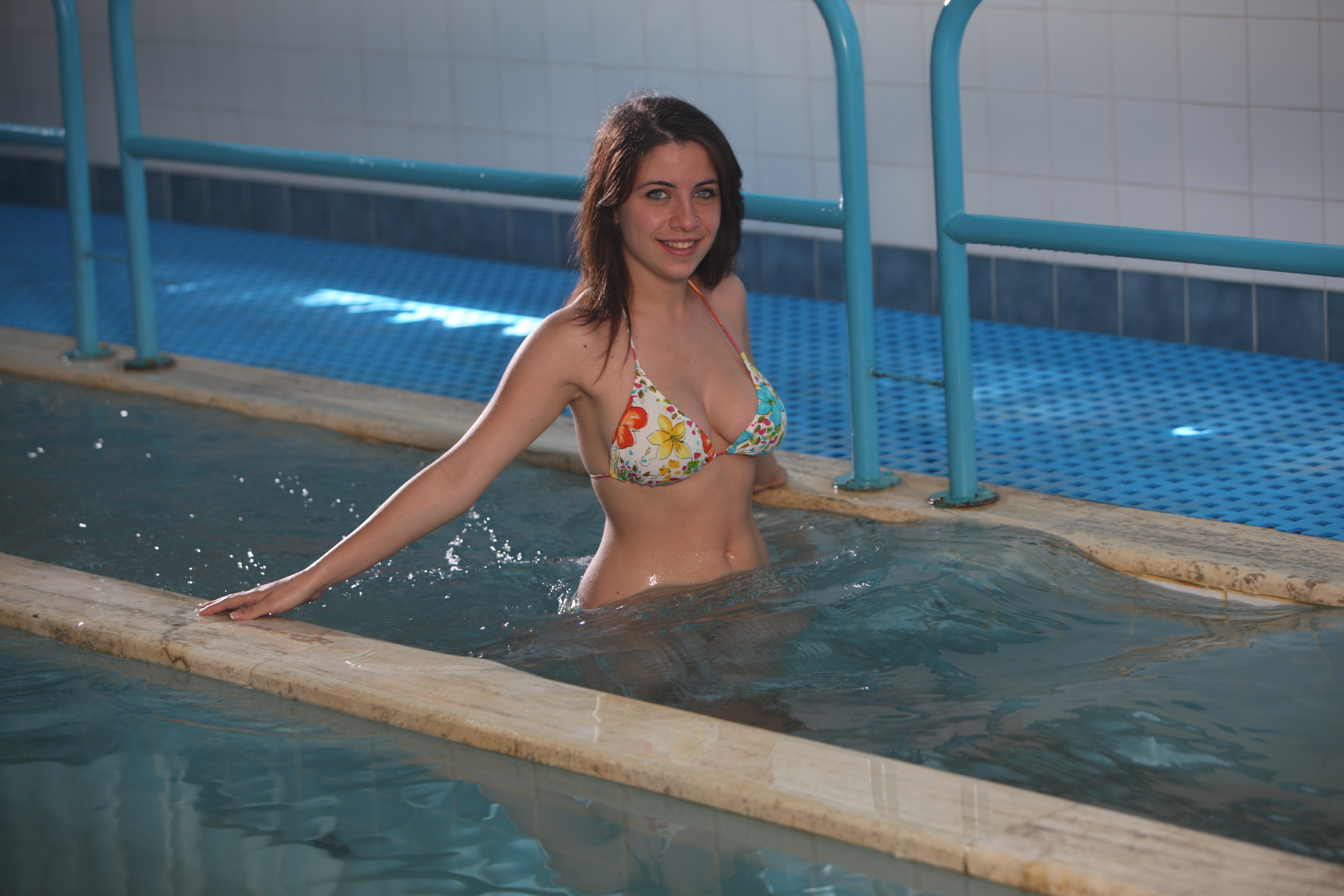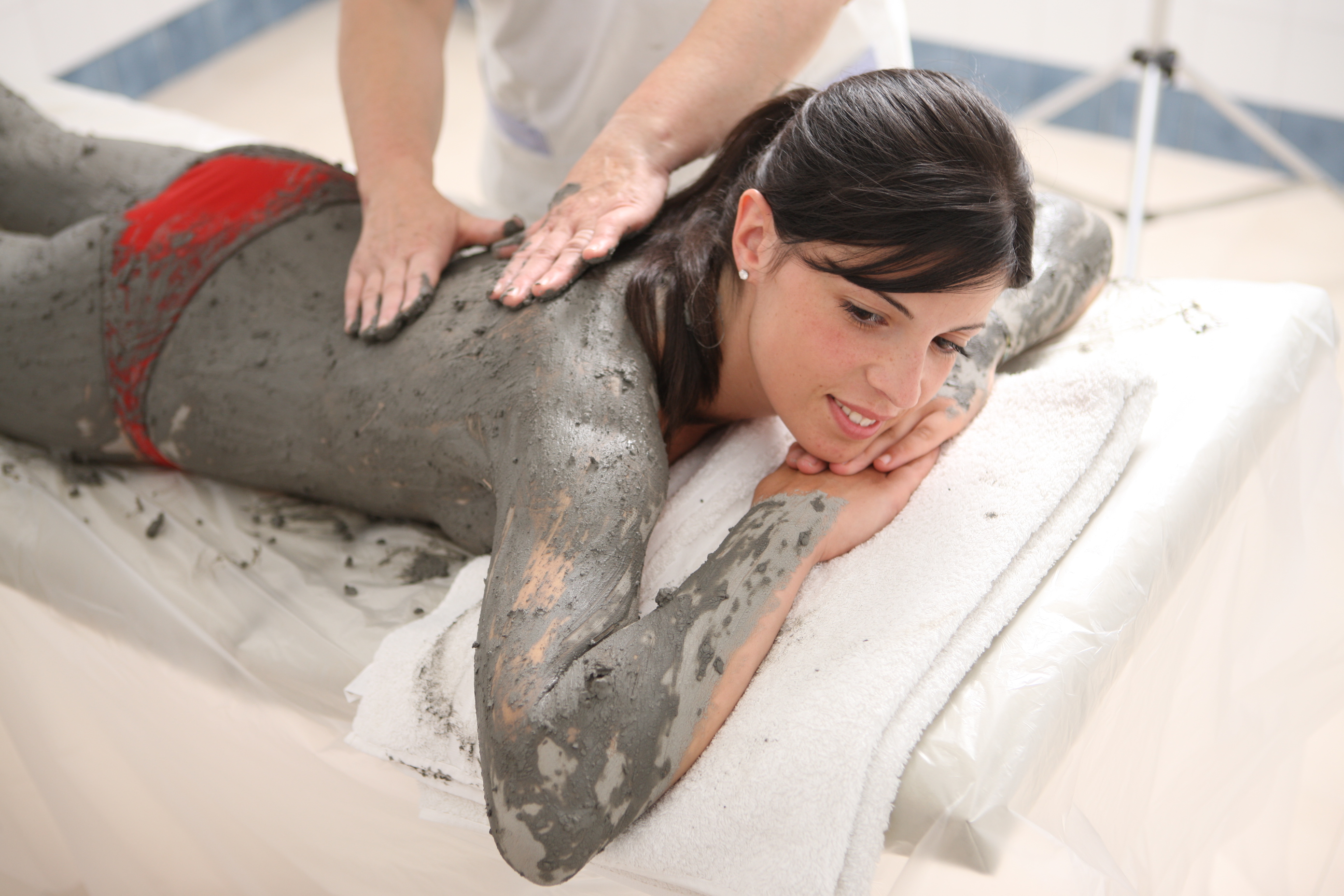MUD-BALNEOTHERAPY
MUD-BALNEOTHERAPY treatments can be provided as follows:
- mud treatment + therapeutic bath;
- mud treatment + cleansing bath or shower;
- therapeutic bath;
- bath and hydromassages.
For the above treatments, fasting patients are taken to individual cubicles ready for the reaction. After being kept in the proper mudpots at a temperature up to 47-50°, the mud pack is gradually placed on the areas to be treated. The patient is then wrapped in a sheet, flannels and blankets to prevent heat dispersion and the real treatment can start.
It will last 15 – 20 minutes on average.
The mud treatment is followed by a cleansing bath with sulphurous water at 34° – 36° for 15 – 20 minutes.
After bathing, the patient is dried up with warm towels and lies down under blankets so that the ‘sweating reaction’ can start. This mud-balneotherapy induced reaction can be followed up in the Solarium.
BICARBONATE CALCIC SULPHUR CRENOTHERAPY IN THE OTO-RHINO-LARYNGOLOGY (ORL) PHLOGISTIC PATHOLOGY
The bicarbonate calcic sulphurous waters of the Calda spring are generally acknowledged as suitable for preventing and treating recurring and chronic diseases of the upper respiratory airways.
The crenotherapy prescribed to prevent and treat chronic inflammations of ears, nose and throat can be ‘dry’ or ‘humid’.
Being characterised by a modest water component, aerosol therapies, inhalations and endotimpanic insufflations are classified as ‘dry treatments’.
On the other hand, inhalations, nebulisations and nasal irrigations belong to ‘humid’ thermal treatments, since water constitutes the most relevant component.
Inhalation and aerosol treatments are especially recommended to cure otitis media catarrhalis and sinusitis.
Pulmonary ventilation, prescribed in the cure of chronic obstructive bronchitis, consists of insufflations of sulphurous water. This water is nebulised by means of an ‘intermittent positive pressure mechanical ventilator’ which augments the intake of sulphurous water during inhalation and reduces the exhalation phase to less than 4 seconds.
Thanks to endotimpanic insufflations the active principles of the mineral waters reach the medium ear where they can carry out their therapeutic action.
Inhalations are especially recommended for pharyngitis, tonsillitis and laryngitis.
Nasal irrigations are particularly useful to improve the overall anatomy and functions of the nose, as well as of the middle ear, the paranasalis sinus, the pharynx and of the whole respiratory tree.
Moreover, nasal irrigations perform an excellent therapeutic action to treat some types of rhinitis, rhinosinusitis and rhinogenous deafness.
Nevertheless, thermal treatments during acute inflammatory phases are NOT recommended.






